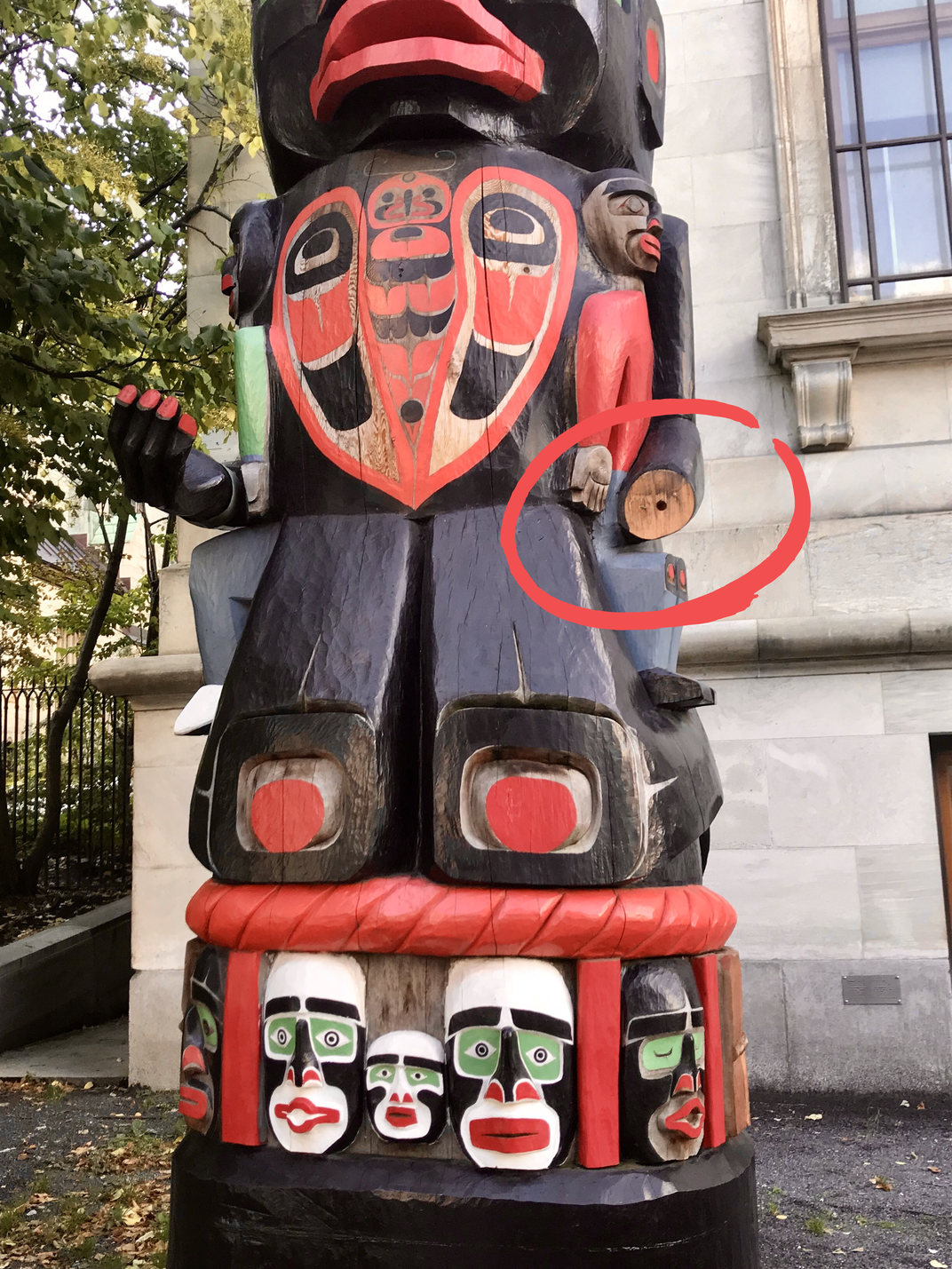Thieves Return Hand Stolen From Montreal Totem Pole, With an Apology Note
‘After we realized what [the artwork] stood for and represented for so many people, we immediately felt sick to our stomach,’ the letter reads
/https://tf-cmsv2-smithsonianmag-media.s3.amazonaws.com/filer/ca/46/ca463270-07b3-41e9-9d0a-ff816e7541b5/mattotemique-3.jpg)
Outside the Montreal Museum of Fine Arts towers a totem pole by Charles Joseph, a Canadian artist from the Kwakiutl First Nation. In the early hours of September 20, the left hand of this striking artwork was stolen, prompting both the museum and Joseph to issue a plea for its return. Fortunately, their appeals seem to have worked. According to Marian Scott of the Montreal Gazette, the thieves have returned the hand, also taking it upon themselves to leave a rather contrite apology note.
In a statement, the MMFA revealed that the stolen appendage was deposited on the museum’s doorstop at some point on the night of October 1 and October 2. In the apology letter, the vandals explained that at the time of the crime, they were “not in a sober state of mind” and “had no idea what the totem pole was.”
“After we realized what this stood for and represented for so many people, we immediately felt sick to our stomach,” the note continued. “We would like to let all know that in NO WAY, SHAPE OR FORM was this done in spite.”
The theft was particularly upsetting because Joseph’s artwork pays tribute to children who suffered under Canada’s residential school system, which sought to forcibly assimilate the country’s Indigenous peoples. Between the early 19th century and 1996, when the last residential school closed, an estimated 150,000 First Nation, Inuit and Métis children were required to attend the institutions. Students were kept away from their parents for much of the year, and punished severely if they spoke their native language or practiced their ancestral customs. Conditions at the schools were abysmal. “Child neglect was institutionalized,” according to a damning report by the Truth and Reconciliation Commission of Canada, “and the lack of supervision created situations where students were prey to sexual and physical abusers.”
Joseph, as the CBC reports, was forced to attend a residential school himself. His Residential School Totem Pole depicts, among other symbols, the fox “who bears witness to the past,” the raven “who represents the collusion between Church and State,” and the “wild woman” who “represents tradition and culture,” as the MMFA explains in its statement. The totem pole has been on loan to the institution since 2017.
After Joseph learned of the theft of the artwork’s left hand, he made a public request for its return. “It might not mean anything to them, maybe they just liked the way it looked,” he told CBC News. “But bring it back so we can fix it."
“It means a lot to me,” Joseph added.
In their apology note, the thieves stressed that they were, indeed, unaware of the totem pole’s significance. “We were simply ignorant of what it symbolized, and have decided we 100 percent needed to return it,” they wrote, according to the MMFA. “We are sorry, so sorry for any pain and anger we have caused. Love for all people.”
The MMFA has accepted the apology and withdrawn a police complaint made in connection to the incident. “It is reassuring to observe the return of wisdom and clarity following an evening of inebriety,” said Nathalie Bondil, director general and chief curator at the MMFA. She added that the thieves’ change of heart “shows us that art educates and sensitizes us to all of the most important issues, notably our reconciliation with Indigenous peoples.”

